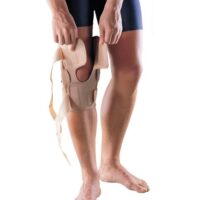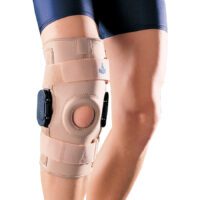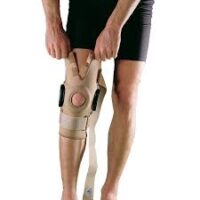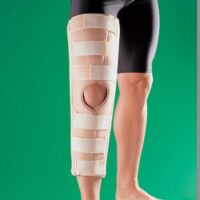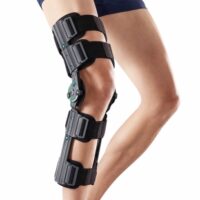ACL Injury Prevention
Article by John Miller
ACL Injury Prevention Program: Keeping Athletes Safe and Active
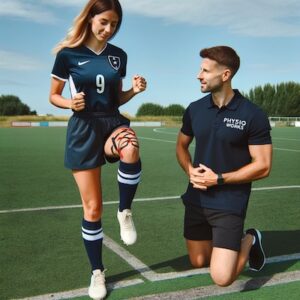
What is an ACL?
The Anterior Cruciate Ligament (ACL) is a crucial part of your knee. It stabilises your knee joint, especially during movements that involve sudden changes in direction or landing from a jump. Athletes often hear the dreaded words, “You’ve ruptured your ACL. You’re out for the season,” highlighting the severity of this injury.
Who is at Risk?
ACL injuries are common in sports that require rapid changes in direction on a planted foot. This includes AFL, football, rugby, netball, basketball, skiing, and touch football. Gymnastics and volleyball, which involve landing in unstable or awkward positions, also pose risks. Female athletes are particularly susceptible, with studies showing they have a 4 to 8 times higher risk than males, largely due to hormonal influences and muscle imbalances.
What Causes an ACL Injury?
Most ACL injuries occur without direct contact with another player. These non-contact injuries often happen when athletes pivot or land awkwardly. The best defence against ACL injuries is proper education and a structured ACL injury prevention program.
The Importance of Prevention
Research underscores the effectiveness of prevention programs. A study published in The Journal of Bone and Joint Surgery in May 2012 found that such programs reduced the risk of ACL injuries by 52% in females and 85% in males. These programs focus on strengthening the quadriceps, hamstrings, core, hips, and lower extremities. They also incorporate proprioception, balance control, and sport-specific agility drills.
Physiotherapist’s Role in Prevention
A physiotherapist can tailor an ACL injury prevention program to your specific needs. At PhysioWorks, we integrate player education with targeted strengthening exercises and balance control techniques. Our ACL prevention programs are customised to address each athlete’s unique deficits, aiming to keep you injury-free on the field.
New Research Insights
Recent studies have emphasised the role of neuromuscular training in preventing ACL injuries. This type of training focuses on improving the coordination and strength of muscles that support the knee. It has been shown to further reduce the risk of injury, particularly when combined with traditional strength and conditioning exercises. A systematic review reported that NMT programs can effectively reduce primary ACL injury prevalence by 43.8% to 73.4%.
What to Do?
If you’re interested in an ACL injury prevention program for yourself or your team, consult a physiotherapist. At PhysioWorks, we offer individual, team, club, or school screenings, education, and training sessions. Our goal is to help you stay active and injury-free.
Conclusion
Preventing ACL injuries is crucial for athletes in high-risk sports. Through targeted training and education, we can significantly reduce the risk. Physiotherapists play a vital role in delivering customised prevention programs that keep athletes on the field and performing at their best.
ACL Injury FAQs
1. What is an ACL injury prevention program? An ACL injury prevention program includes exercises and education designed to strengthen muscles, improve balance, and enhance agility to reduce the risk of ACL injuries.
2. Who is at risk for ACL injuries? Athletes in sports that involve sudden changes in direction or jumping, such as football, rugby, netball, basketball, and skiing, are at higher risk.
3. Why are females more prone to ACL injuries? Female athletes have a higher risk due to hormonal influences and muscle imbalances, which can affect knee stability.
4. How effective are ACL injury prevention programs? Research shows these programs can reduce ACL injury risk by up to 85% in males and 52% in females.
5. What exercises are included in an ACL injury prevention program? These programs typically include strengthening exercises for the quadriceps, hamstrings, core, and hips, as well as balance and agility drills.
6. How can I start an ACL injury prevention program? Consult a physiotherapist to develop a personalised ACL injury prevention program tailored to your specific needs and risks.
Related Articles
- ACL Injury: Discover how ACL injuries occur and the latest treatment options available.
- Knee Pain: Learn about common causes of knee pain and effective treatment strategies.
- Sports Injury Prevention: Find out how to prevent common sports injuries with expert tips and exercises.
- Patellofemoral Pain Syndrome: Understand the symptoms and treatments for patellofemoral pain syndrome.
- Meniscus Tear: Explore the causes, symptoms, and treatments for meniscus tears in the knee.
- Chondromalacia Patella: Learn about a common source of anterior knee pain and effective ways to manage it.
- Strength Training for Athletes: Discover the benefits of strength training and how it can improve athletic performance.
- Hamstring Injury: Learn about the causes, prevention, and treatment of hamstring injuries.
- Balance and Agility Training: Discover how balance and agility training can help prevent injuries and enhance performance.
References
Sadoghi P, von Keudell A, Vavken P. Effectiveness of anterior cruciate ligament injury prevention training programs. J Bone Joint Surg Am. 2012 May 2;94(9):769-76. doi: 10.2106/JBJS.K.00467. PMID: 22456856.






